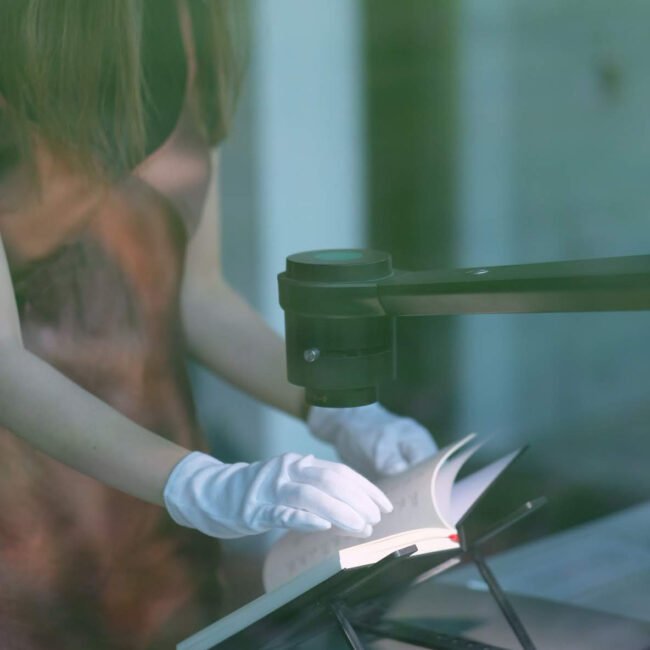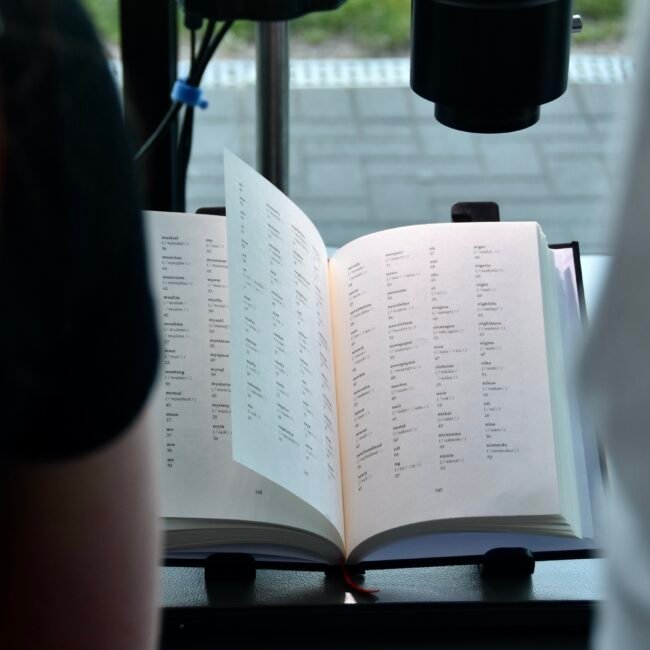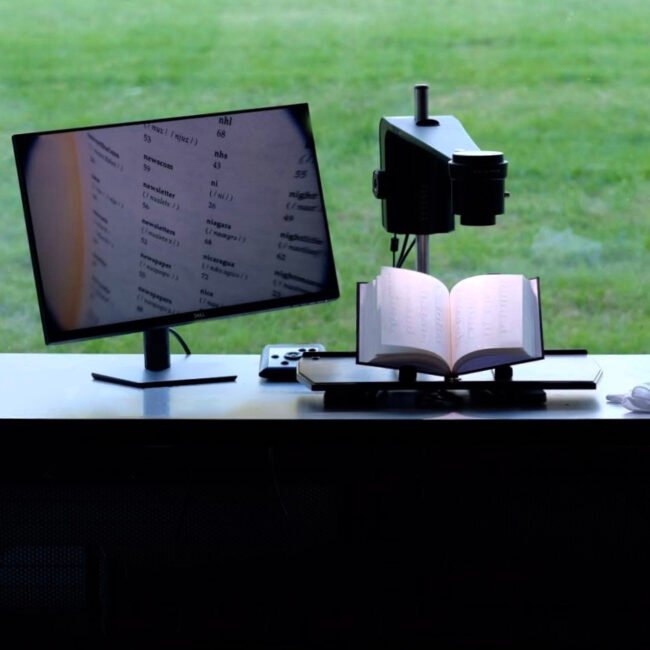Sui generis [2024]
Playhouse 2, Goldsmiths University of London
Sui generis investigates the ideas of homophily, correlation and bias in machine learning models, as well the statistical projections they produce. Using LLMs, I created a personal classification algorithm that is able to predict (or not) how much I like or dislike a certain word. The artefact that resulted from this initial study is a “personalised” dictionary, where each word has a predicted numeric classification, representing my preferences from the model’s perspective. The installation space is designed to resemble a quasi-forensic or clinical scene, allowing visitors to examine the book using a digital microscope.
With Sui generis, I question the way other people’s preferences are embedded in these supposed personalised classifications. How is my identity being influenced by the homogenised entity built by the model?
/ materials
Book, screen and digital microscope
Sui generis [2024]
Playhouse 2, Goldsmiths University of London
Sui generis investigates the ideas of homophily, correlation and bias in machine learning models, as well the statistical projections they produce. Using LLMs, I created a personal classification algorithm that is able to predict (or not) how much I like or dislike a certain word. The artefact that resulted from this initial study is a “personalised” dictionary, where each word has a predicted numeric classification, representing my preferences from the model’s perspective. The installation space is designed to resemble a quasi-forensic or clinical scene, allowing visitors to examine the book using a digital microscope.
With Sui generis, I question the way other people’s preferences are embedded in these supposed personalised classifications. How is my identity being influenced by the homogenised entity built by the model?
/ materials
Book, screen and digital microscope






